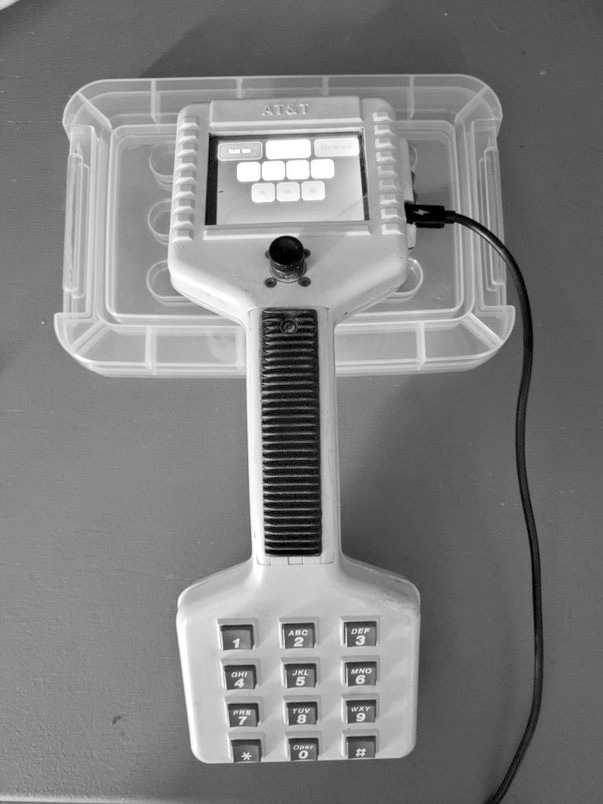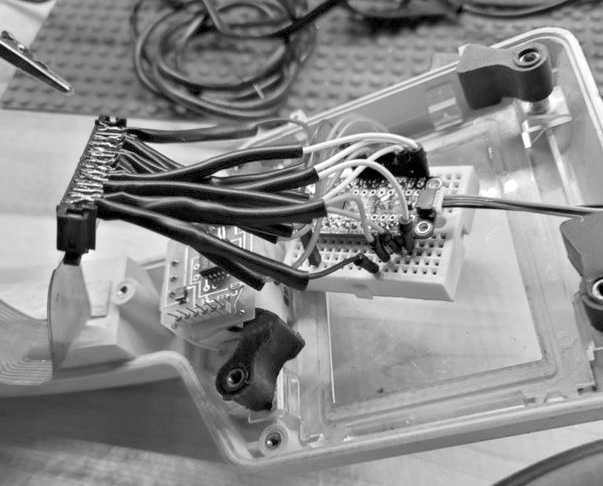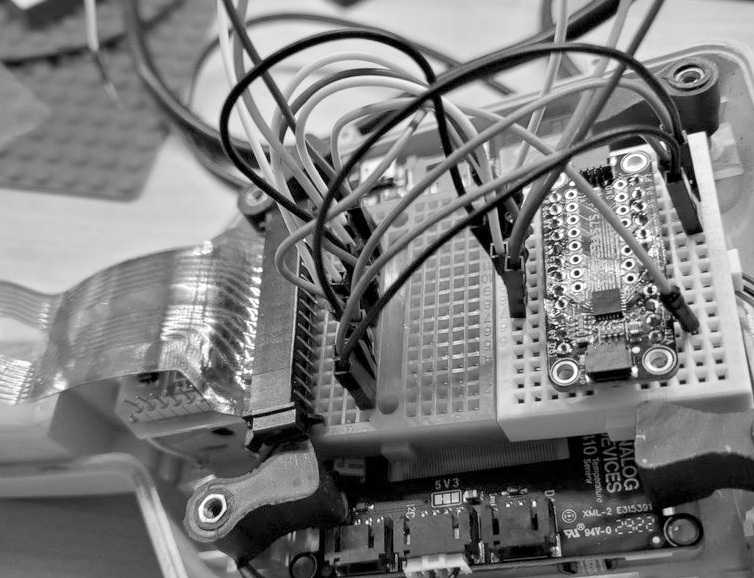The BoneBox
by Delchi
Phreakers have long cherished the lineman's set, also known as a "butt-set" or a Beige Box for connecting to phone lines.
A staple tool of the phone technician and telecom worker, they remain both a useful tool and a collector's item in the age of VoIP.
A variant of the lineman's set was known as a "Craft Access Terminal" (CAT) or a "dogbone," so called for its large size and the shape of a dog toy bone. This was a combination of lineman's set, a modem, a joystick and an LCD display screen. It was featured in Phrack Magazine, Issue #48.
The purpose of the CAT was to allow the person working on the line to access the switch to expedite deployment of phone lines instead of calling and waiting for provisioning. This made it a must-have tool for phreakers who could lay their hands on one, who would try to find the passcode to the switch, which was not always a tricky thing to do. In the late-1990s, a switch in Brooklyn had the passcode 000000.
So here I am in 2023 and in my boxes of gear I came across an old AT&T-branded dogbone that I bought at a tech flea market.
The battery was long since dead, and it did not respond well to being used as a lineman's set. The switches that were designed to interface with it are long gone.
I was about to retire it as a museum piece to collect dust for all time when I had an idea. Recently I had read an article about the Adafruit PyPortal - an all-in-one computer with a touch screen color display - and the things it could do with Python.
Like Bernie S. with a handful of crystals, I knew what had to be done. Thus, the BoneBox was born.
A few screws loosened later, I discovered that the PyPortal is very nearly the exact size of the LCD display in the CAT. Likewise, the keypad was a standard 3x4 DTMF touchpad with a single line to each button.
The ribbon cable connecting it all together was aged and delicate but serviceable. I was able to strip out the LCD screen, modem, and the brains of the CAT and desolder the connector that connected the touchpad to the brains.
It was then that I ran into the first snag: the PyPortal did not have enough GPIO pins in order to service the entire touchpad.
I added a GPIO expander board on a small breadboard and then soldered each pin, each protected with a heat shrink tube, from the original connector to the GPIO expander board. Some quick test code in Python and I was able to recognize all the buttons on the touchpad.
The next challenge was to supply power to the PyPortal.
On the side of the dogbone there is a sliding mode select switch which I removed, leaving the cap of the sliding selector in place. I then used a Dremel to remove some of the plastic, exposing the USB power connector of the PyPortal, with the added bonus of the sliding selector acting as a cover when not in use.
Next I used an Adafruit power and charging board along with a new lithium-ion battery that fit in the battery compartment to make it portable.
Thanks to some old-school hacking, wiring skillz, and creativity it all fit together and I had a working touch screen interface with a DTMF keypad.
The next question became what to do with it all. A Blue Box? A Red Box?
The honest answer was "Why not both?" After acquiring the needed tones from the Internet, I had everything I needed to code up a touch screen interface to allow me to use the dogbone as a Red Box, Blue Box, and to create the 2600 hertz tone of days gone by.
The dialpad was lacking the A, B, C, and D buttons, but some quick coding and I had added those buttons to the touch screen interface. Still, something was missing.
This was a complete throwback to the golden age of phreaking, but it lacked anything truly modern. I then recalled that the PyPortal has a full complement of Wi-Fi on board, so with some tinkering around the limited memory and practicality I added a Wi-Fi access point scanner to the arsenal.
I now had transformed an ancient piece of days-gone-by technology into a conversation piece and tool for the ages.
I'll be clipping it on my belt and taking it to DEFCON to show that I truly put the old in old-school.
Parts List
- One AT&T Dogbone
- Adafruit PyPortal (Part #4116)
- Adafruit PowerBoost 1000 Charger (Part #2465)
- Adafruit Lithium-Ion 3.7v Battery (Part #1781)
Delchi is a long time denizen of the hacking/phreaking scene. He is the inventor of the Spider Box HID card hacking tool (H2K2) and Rolling Thunder, a power wheelchair pen testing platform. In the past he has been a volunteer at the HOPE convention, guest on Off The Hook, member of The Dorsai Embassy hackerspace, DJ and roadie to the hacking community, and currently is the lead of Hackers With Disabilities (HDA) at DEFCON as well as a five-year veteran goon. Shai Dorsai!



